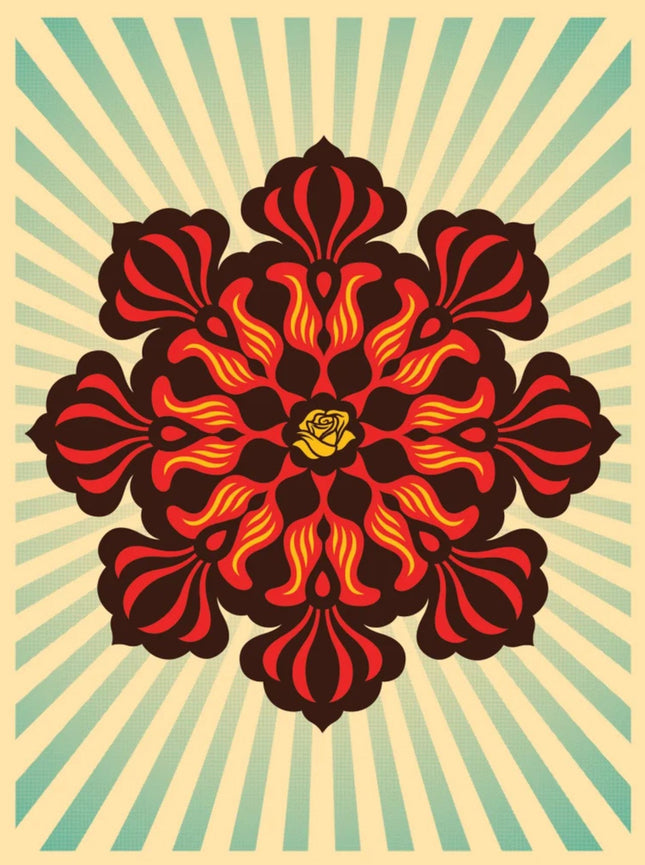
Mandala

Ernesto Yerena Montejano- Hecho Con Ganas Flowering Dignity Silkscreen Print by Ernesto Yerena Montejano- Hecho Con Ganas
Flowering Dignity 4-Color Hand-Pulled Limited Edition Silkscreen Print on Fine Art Paper by Ernesto Yerena Montejano (Hecho Con Ganas) Famous Mexican American Pop Artwork Artist. 2019 Signed & Numbered Limited Edition of 200 Size 18x24 "Flowering Dignity" stands as a testament to the vibrant confluence of cultural expression and political commentary, elements often inherent in the works of Ernesto Yerena Montejano, an artist whose roots extend into Mexican and American soils. His creation, a 4-color hand-pulled limited edition silkscreen print on fine art paper, embodies the ethos of Pop Art with its bold colors and graphic clarity. Yet, it also carries the raw, unfiltered voice found in street and graffiti art. Created in 2019, this artwork is not just a visual statement but a piece of cultural dialogue that resonates with themes of identity, dignity, and the flowering of the human spirit under the weight of societal challenges. Ernesto Yerena Montejano, operating under his studio name, Hecho Con Ganas, has etched his name in the annals of Chicano and Pop Art through his consistent output of visually compelling and thought-provoking artworks. His "Flowering Dignity" print, part of a limited edition of 200, is particularly significant. Measuring 18x24 inches, each piece is meticulously signed and numbered by the artist, underscoring the personal connection and authenticity that Montejano brings to his work. It is this authenticity that allows the artwork to resonate deeply with its audience, providing a unique aesthetic experience steeped in cultural significance. Montejano's work is characterized by a fusion of traditional motifs with contemporary issues, a visual commentary that mirrors the dual heritage many Mexican Americans navigate. In "Flowering Dignity," the central motif—a stylized flower—bursts with energy, its petals unfurling in a display of resilience and beauty. This imagery, juxtaposed against a backdrop of radiating lines, suggests an awakening, a burst of life and dignity against a structured, perhaps restrictive background. As a piece of Pop Art, it transcends mere decoration, symbolizing shared experience and solidarity within the community. As street art, it carries the spirit of rebellion and the voice of the underrepresented, speaking volumes from the walls it adorns to the galleries it graces.
$364.00


